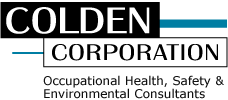Often, ventilation rates in residences, offices or commercial establishments must be determined. If ventilation rates are too low, complaints about indoor air quality may arise. If ventilation rates are too great, heating and cooling costs may rise. Ventilation can be controlled by using heating ventilation and air condition (HVAC) equipment that allows fresh outside air into occupied spaces after being adequately conditioned. The inflow of uncontrolled air, such as through poorly insulated gaps around windows and doors can affect the quality and amount of air exchange. Using tracer gases can help to identify ventilation rates, reduce energy costs, and ensure occupant comfort. Tracer gases can also be used to identify the rate of decay of certain environmental contaminants.
Many different tracer gases are available such as; nitrous oxide, carbon dioxide, various refrigerants and sulfur hexaflouride (SF6). Typically, a tracer gas does not exhibit an odor, and for the most part should be inert. For the purpose of this Tech Talk, we will focus on the use of SF6 as the tracer gas. The basic concept is to release the tracer gas into the space and to use a calibrated electronic instrument to measure the decay of the tracer gas over time. The rate of decay of the tracer gas is used to calculate the ventilation rate. The rate is typically displayed as air changes per hour (ac/h), or air changes per day (ac/d). A spreadsheet program can be used to record the results and plot a curve.
ASTM E741-11 entitled Standard Test Method for Determining Air Change in a Single Zone by Means of Tracer Gas Dilutionprovides the standard method for a ventilation rate study. Additionally, Measuring Ventilation Using Tracer Gases, by Bruel and Kjaer is a very helpful document.
When using SF6 as a tracer gas, an infrared (IR) spectroscopy instrument must be used. One such unit, the Miran Sapphire has a very narrow measurement range, from three parts per million down to lower parts per billion. This instrument is not recommended for ventilation surveys due to the limitations of the narrow range. The California Analytical Instrument’s Photoacoustic Infrared Spectroscopy model 1312 is preferred. The measurement scale of this second instrument ranges from 300 ppm down to parts per billion. The wider measurement range of the Model 1312 allows for a varied approach in the field for release and decay monitoring and can accommodate various unknowns when performing the ventilation study.
Once the tracer gas is released, the operator must wait for the SF6 to adequately mix with the indoor air. The duration of the mixing process will be dependent on the volume of the space, existing air mixing rates, and other factors. Because the SF6 is heavier than air, fans may be required to promote adequate mixing. After the release and mixing, the concentration of SF6 should be noted at constant intervals, such as once per minute or once per hour to allow a detailed plot of the ventilation rate over time to be generated. The frequency at which measurements will need to be collected will be determined by the ventilation rate. If the space is well ventilated, such as 4-6 air changes per hour, measuring the SF6 every minute for fifteen minutes might be adequate to yield a 10-15 point curve. It is recommended that at least three release-and-decay monitoring runs be performed to ensure accurate measurement of the ventilation rate.
Other equipment needed to measure ventilation rates includes the tracer gas: a cylinder of SF6 and a regulator for dispensing the SF6. The size of the cylinder is dependent upon the volume of the space to be studied. Typically a ten pound cylinder, which yields 20 cubic feet (ft3) would be adequate for most spaces. A 139 pound cylinder (330 ft3) may be needed for very large spaces. In conclusion, tracer gas ventilation surveys are helpful indoor air quality assessment tools, but as with any IAQ or IH survey, advance planning is key to a successful project.
Reference
ASTM E741-11, Standard Test Method for Determining Air Change in a Single Zone by Means of a Tracer Gas Dilution, ASTM International, West Conshohocken, PA, 2011, www.astm.org

